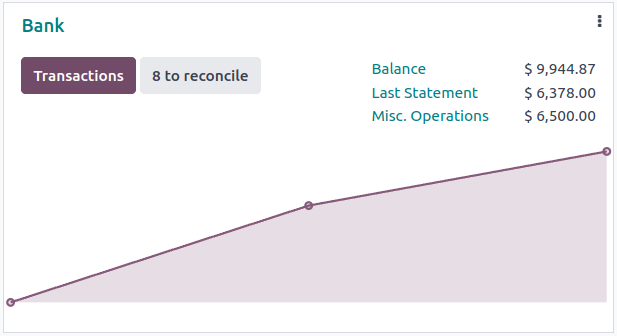Bank and cash accounts¶
You can manage as many bank or cash accounts as needed on your database. Configuring them correctly allows you to have all your banking data up-to-date and ready for reconciliation with your journal entries.
In Odoo Accounting, each bank account has a dedicated journal set to post all entries in a dedicated account. Both the journal and the account are automatically created and configured whenever you add a bank account.
Note
Cash journals and accounts must be configured manually.
Bank journals are displayed by default on the Accounting Dashboard in the form of cards which include action buttons.

Manage bank and cash accounts¶
Connect a bank for automatic synchronization¶
To connect your bank account to your database, go to the Accounting Dashboard and on the kanban card of an unconnected bank, click Search over 26000 banks. Select your bank from the list, click on Connect, and follow the instructions.
See also
Create a bank account¶
If your banking institution is not available in Odoo, or if you don’t want to connect your bank account to your database, you can configure your bank account manually.
To manually add a bank account, go to the Accounting Dashboard and on the kanban card of an unconnected bank, click Search over 26000 banks. Then, click on Record transactions manually (at the bottom right), fill out the bank information, and click Create.
Note
Odoo automatically detects the bank account type (e.g., IBAN) and enables some features accordingly.
A default bank journal is available and can be used to configure your bank account by going to . Open it and edit the different fields to match your bank account information.